Understanding the measurements of half of ¼ cups, ⅓ cups and ¾ cups is often key to a successful recipe. Here I share fingertip conversions, simple formulas, and a free chart to assist your cooking conversion needs.
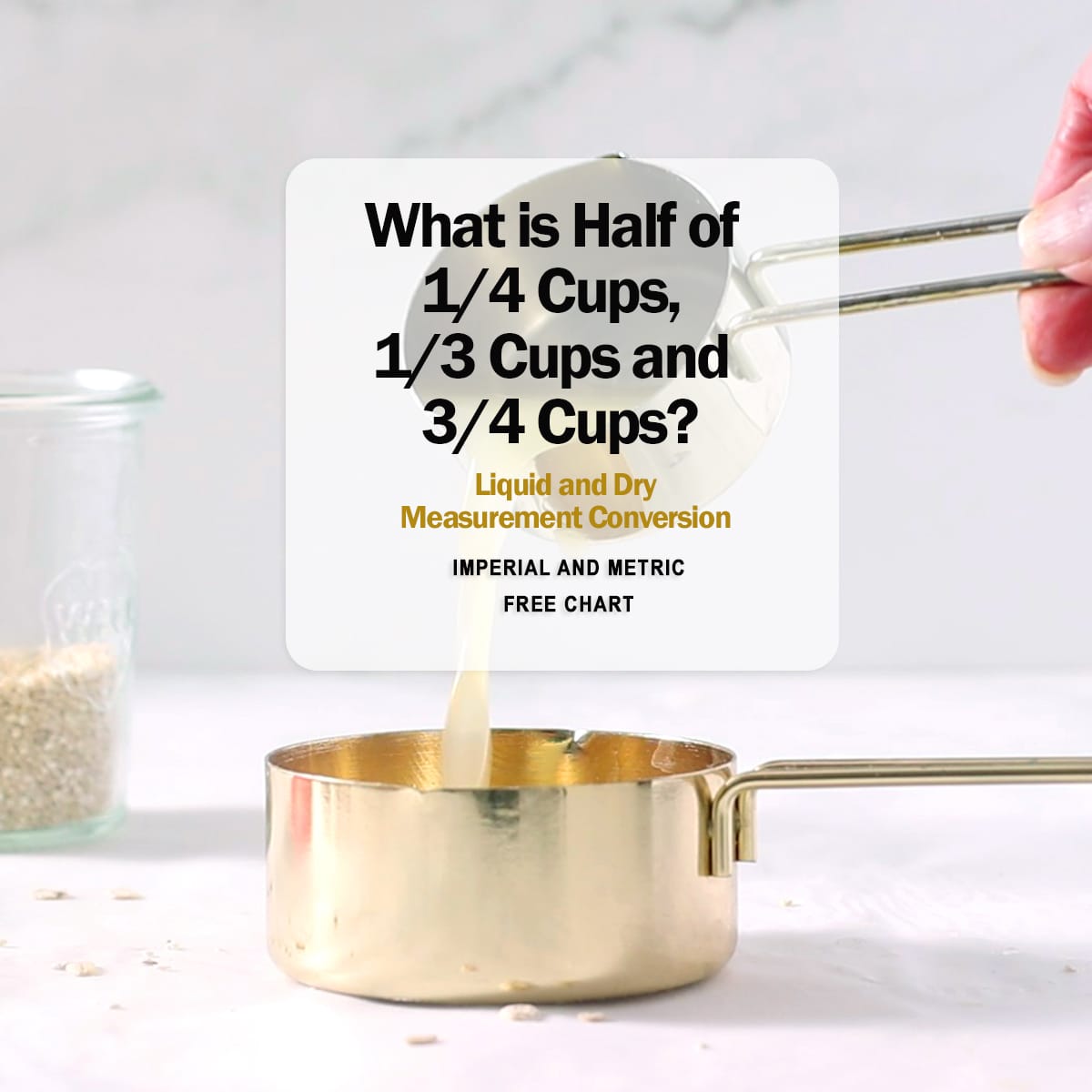
In this guide, I'll explore what half of ¼ cups, ⅓ cups, and ¾ cups looks like in practical terms, complete with easy-to-follow mathematical formulas.
In the world of cooking, precision is often the key to success. When it comes to splitting fractions, it can get tricky. Whether you're following a beloved family recipe or trying out something new, understanding measurements is crucial.
When a recipe calls for half of a cup, it's straightforward enough. But what about when you're dealing with fractions of a cup? Let's dive in!
Jump to:
- Half of ¼ Cup: Begin the Journey
- Half of ⅓ Cup: A Trickier Fraction
- Half of ¾ Cup: A Larger Portion
- 📌Conversion Chart for Half Amounts
- Tips for Remembering Half Conversions
- Versatility of Half Measurements
- Practical Applications in the Kitchen
- Converting Cups to Metric Measurements
- Taking Cup Fractions Further
- 📌Free Kitchen Measuring Conversion Chart
- FAQS
Half of ¼ Cup: Begin the Journey
A quarter cup is a common measurement in recipes, especially for ingredients like nuts, seeds, or oils. But what if you only need half of that? To find half of ¼ cup, we use a simple mathematical formula:
¼ cup ÷ 2 = ⅛ cup
So, half of a ¼ cup is ⅛ cup. It's easy to remember that when you cut a quarter in half, you get an eighth. This measurement is equivalent to 2 tablespoons, which is a handy conversion to know for smaller recipes.
Half of ⅓ Cup: A Trickier Fraction
Moving on to one-third of a cup, finding half might seem a bit trickier, but fear not! The formula to find half of ⅓ cup is:
⅓ cup ÷ 2 = ⅙ cup
Half of a ⅓ cup is ⅙ cup. This measurement is equivalent to approximately 2 tablespoons plus 2 teaspoons. When you're dealing with a ⅓ cup, halving it results in one-sixth, making it perfect for those times when you need a smaller amount without a full ⅓ cup.
Half of ¾ Cup: A Larger Portion
When a recipe calls for ¾ cup of an ingredient, halving it can be a bit more substantial. Let's see how we find half of ¾ cup:
¾ cup ÷ 2 = ⅜ cup
Thus, half of a ¾ cup is ⅜ cup. This measurement is equivalent to 6 tablespoons. It's helpful to remember that ¾ is the same as 6/8, so when halved, you get ⅜.
📌Conversion Chart for Half Amounts
| Original Cup | Half the Amount |
|---|---|
| 1 cup | ½ cup |
| ¾ cup | 6 tbsp |
| ⅔ cup | ⅓ cup |
| ½ cup | ¼ cup |
| ⅓ cup | 2 tablespoon + 2 tsp |
| ¼ cup | 2 tbsp |
Tips for Remembering Half Conversions
To remember common conversions, think of splitting a quarter into two parts to get an eighth.
For a third, it's like splitting a pizza into six equal slices to get one-sixth.
And for three-fourths, think of splitting a pizza with eight slices to get three-eighths.
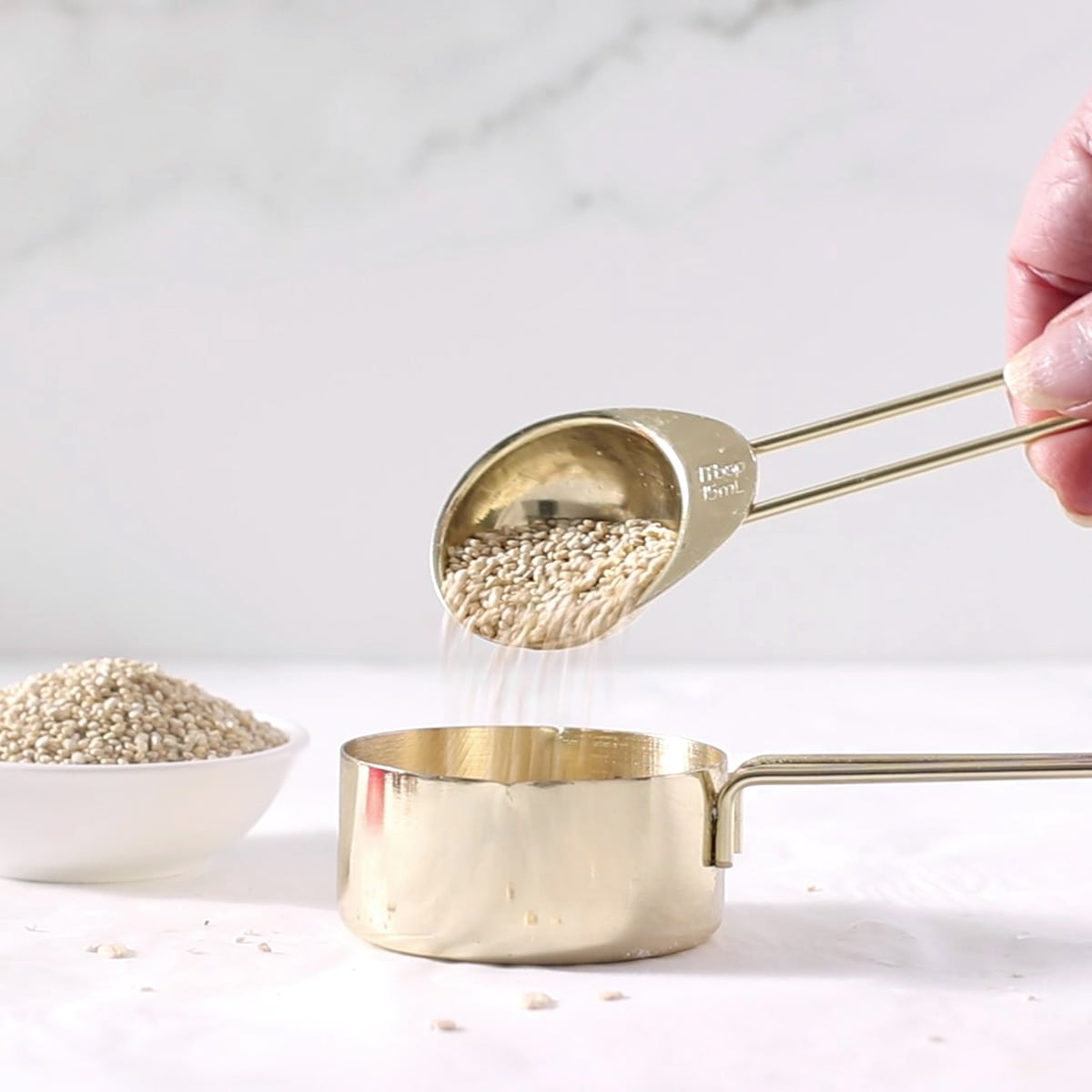
Versatility of Half Measurements
When we think of halving measurements, it's not just about making smaller portions. Half measurements offer a level of versatility that can enhance the creativity and efficiency of your cooking endeavors. Here are some additional scenarios where halving fractions of cups can come in handy:
Ingredient Substitutions
Half measurements are incredibly useful when substituting ingredients in recipes. For example, if a recipe calls for ¼ cup of whole milk but you only have skim milk on hand, halving the ¼ cup to ⅛ cup ensures you maintain the proper liquid consistency without compromising the flavor.
Cooking for Dietary Needs
In today's diverse culinary landscape, many individuals have dietary restrictions or preferences. Halving measurements allows for more flexibility in adapting recipes. For instance, if a recipe calls for ¾ cup of butter, halving it to ⅜ cup (6 tablespoons) can help reduce the overall fat content for those seeking a lighter option.
Precision in Flavor Profiles
Cooking is an art, and sometimes you're aiming for the perfect balance of flavors. Halving ingredients like spices or herbs ensures you achieve the ideal taste without overwhelming the dish. For example, if a recipe calls for ⅓ cup of chopped cilantro but you prefer a milder flavor, halving it to ⅙ cup allows you to maintain the essence of the herb without it dominating the dish.
👉Want to Save This Recipe?
Measuring Efficiency
Knowing how to halve measurements efficiently saves time and effort in the kitchen. For instance, if a recipe requires ¼ cup of diced onions, but you only need half of that amount, you can quickly halve ¼ cup to ⅛ cup without the need for additional calculations.
Specialized Cooking Techniques
Certain cooking techniques, such as reductions or glazes, benefit from precise measurements. Halving measurements allows for better control over the consistency and intensity of these techniques. When reducing a sauce that calls for ¾ cup of wine, halving it to ⅜ cup ensures you achieve the desired thickness and flavor concentration.
Practical Applications in the Kitchen
Now that we've explored the mathematical formulas for finding half of ¼ cups, ⅓ cups, and ¾ cups, let's see how this knowledge can be applied in the kitchen.
Recipe Adjustments
Knowing how to halve these common measurements allows for easy adjustments in recipes. For instance, if a recipe calls for ¾ cup of sugar but you want to reduce the sweetness, halve it to ⅜ cup (or 6 tablespoons).
Smaller Batch Cooking
Sometimes you don't need a full ¼ cup, ⅓ cup, or ¾ cup of an ingredient. For smaller batch cooking or when experimenting with new recipes, halving these measurements ensures you're using just the right amount.
Baking Precision
Baking is a science, and precise measurements are crucial. Knowing how to halve these measurements allows you to adjust recipes without compromising the final result. Whether it's halving sugar for a less sweet treat or reducing flour for a smaller batch of cookies, precision is key.
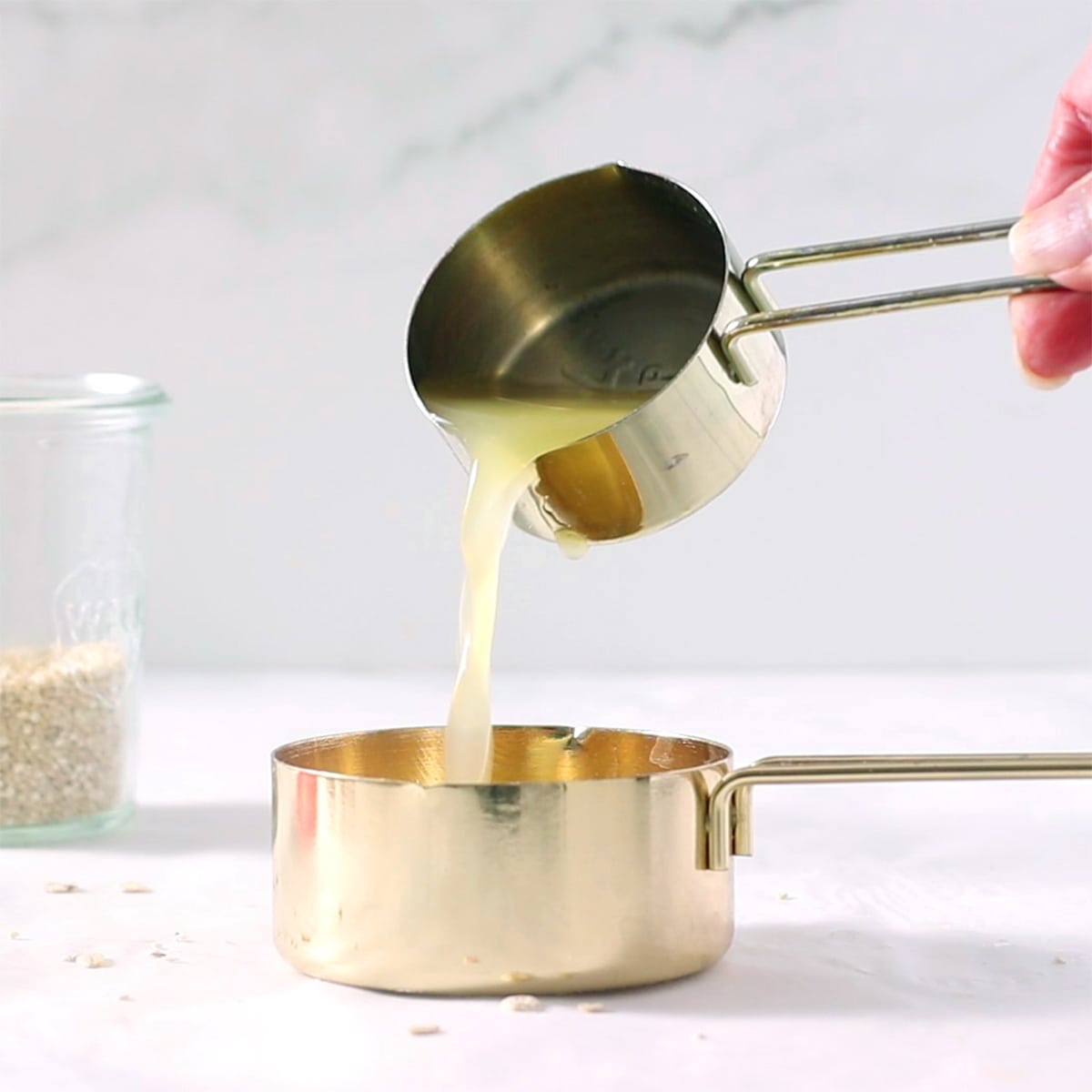
Converting Cups to Metric Measurements
Most countries outside of the United States use a different measurement system, usually the metric system, so it's important to check the country of origin for any recipe before beginning. Instead of cups, the metric system uses milliliters. Here's how to convert cups to milliliters:
¼ Cup to Milliliters: ¼ cup is approximately 59 ml, so half of that would be about 29.5 ml.
⅓ Cup to Milliliters: ⅓ cup is roughly 79 ml, and half of that would be around 39.5 ml.
¾ Cup to Milliliters: ¾ cup is about 177 ml, and half of that equates to approximately 88.5 ml.
Converting these fractions of cups to metric measurements can be incredibly useful, especially when working with recipes that use liters and milliliters.
Taking Cup Fractions Further
In the realm of American cooking and culinary conversions, understanding how to find half of common cup measurements like ¼, ⅓, and ¾ cups is a valuable skill.
Half of ¼ Cup: ¼ cup ÷ 2 = ⅛ cup (2 tablespoons)
Half of ⅓ Cup: ⅓ cup ÷ 2 = ⅙ cup (approximately 2 tablespoons + 2 teaspoons)
Half of ¾ Cup: ¾ cup ÷ 2 = ⅜ cup (6 tablespoons)
Using these formulas, American cooks can confidently adjust recipes, create smaller batches, and bake with precision. Additionally, knowing the metric conversions for these measurements allows a cook to do the same with international recipes.
📌Free Kitchen Measuring Conversion Chart
Download my free kitchen measuring conversion chart and either post it on your refrigerator or laminate it and add it to your recipe notebook. It can be a handy reference when you want to convert measurements to adjust a recipe, both imperial or metric.
FAQS
Half of 1 ¾ cups is ⅞ of a cup or ½ cup + 6 tbsp.
Half of ¾ cup is ¼ cup plus 2 tablespoon or 6 tbsp.
1 ¾ cups doubled is 3 ½ cups.
If you found this cooking conversion article helpful, you might also like some of my other measurement posts including how many teaspoons are in a tablespoon, how many cups in a pint, quart and gallon, and even my Celsius and Fahrenheit conversion chart and explainer.
Also, if you visit any other articles or recipes on my website, please leave a 🌟🌟🌟🌟🌟 review on a recipe or a 📝 comment here if you have thoughts or questions.

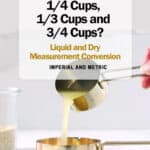
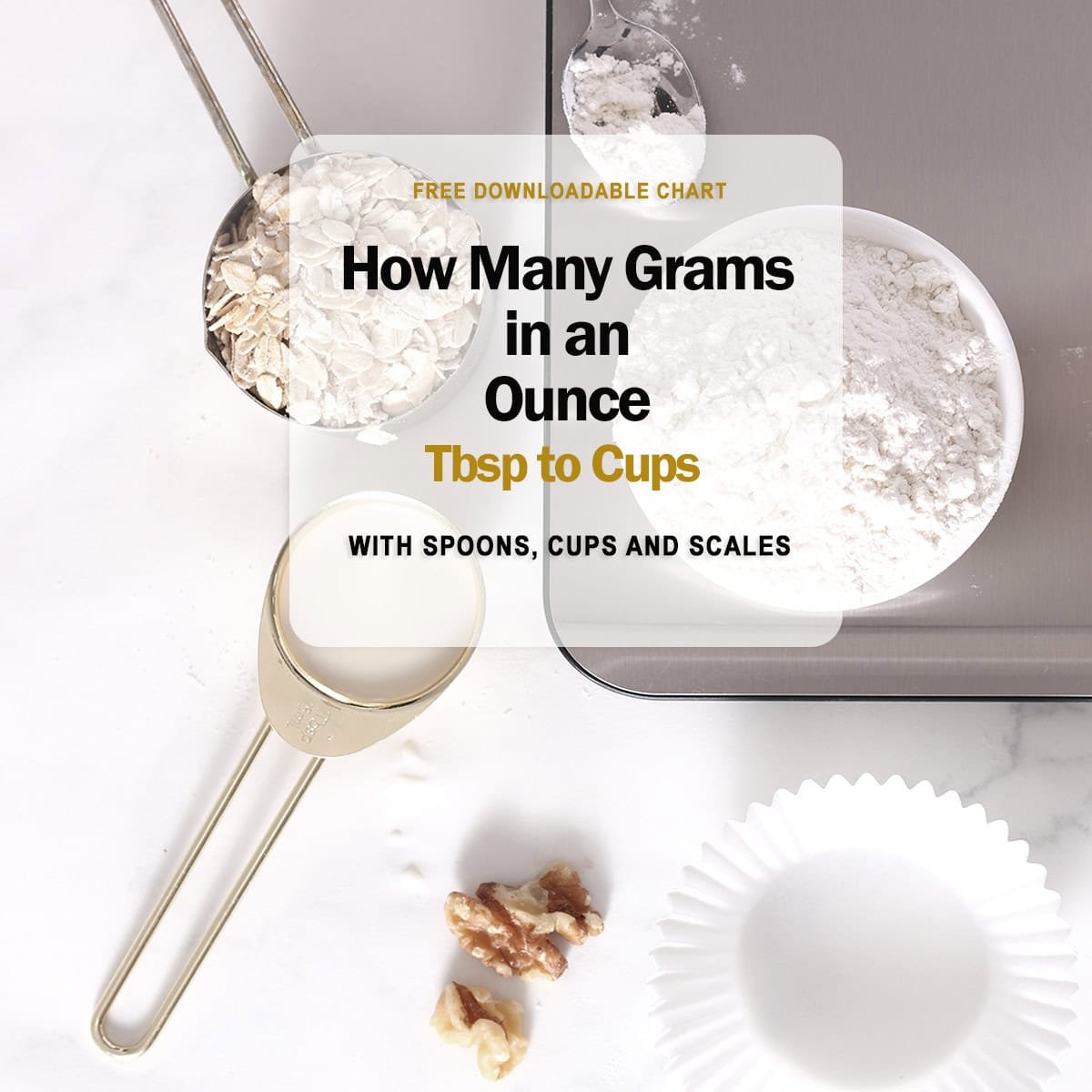
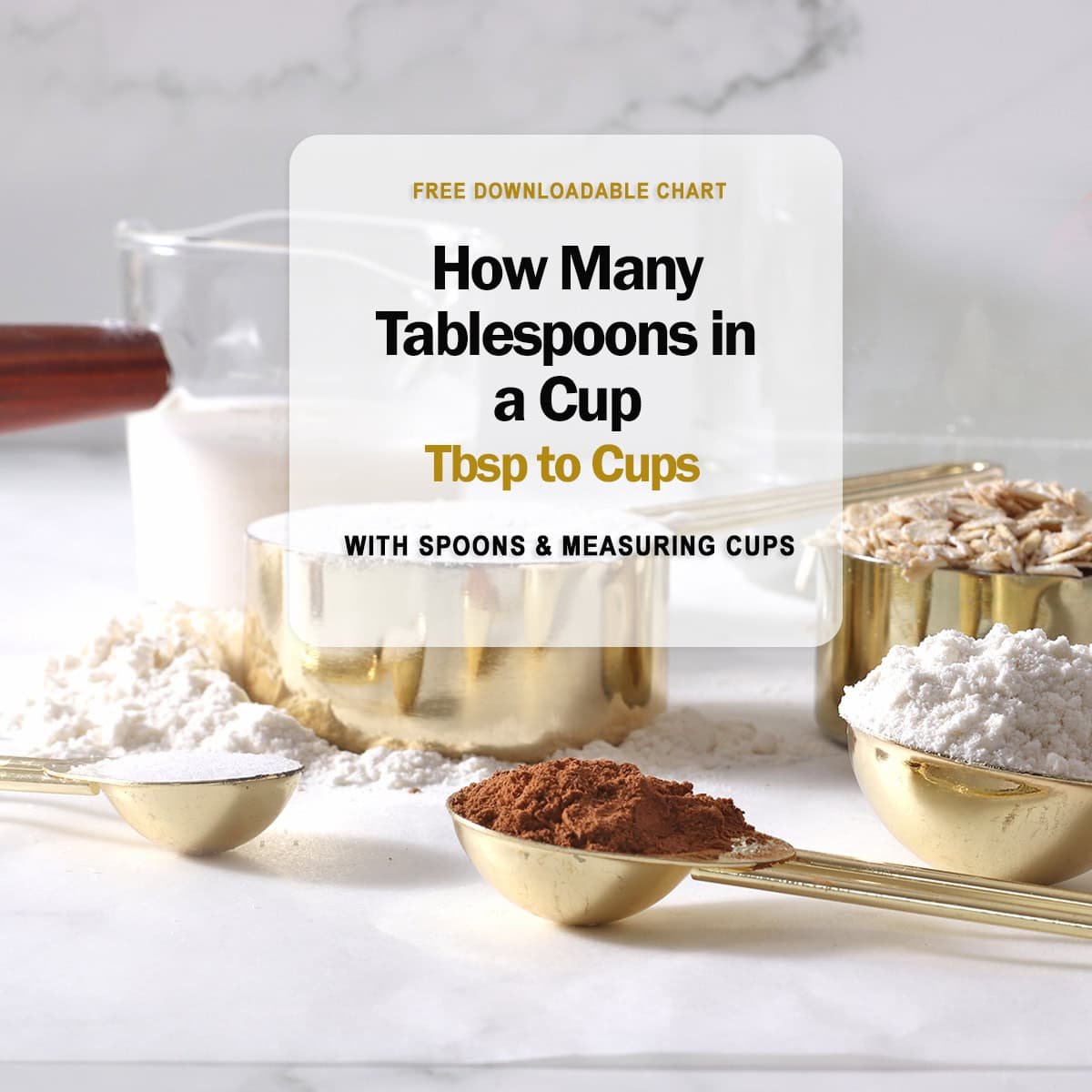
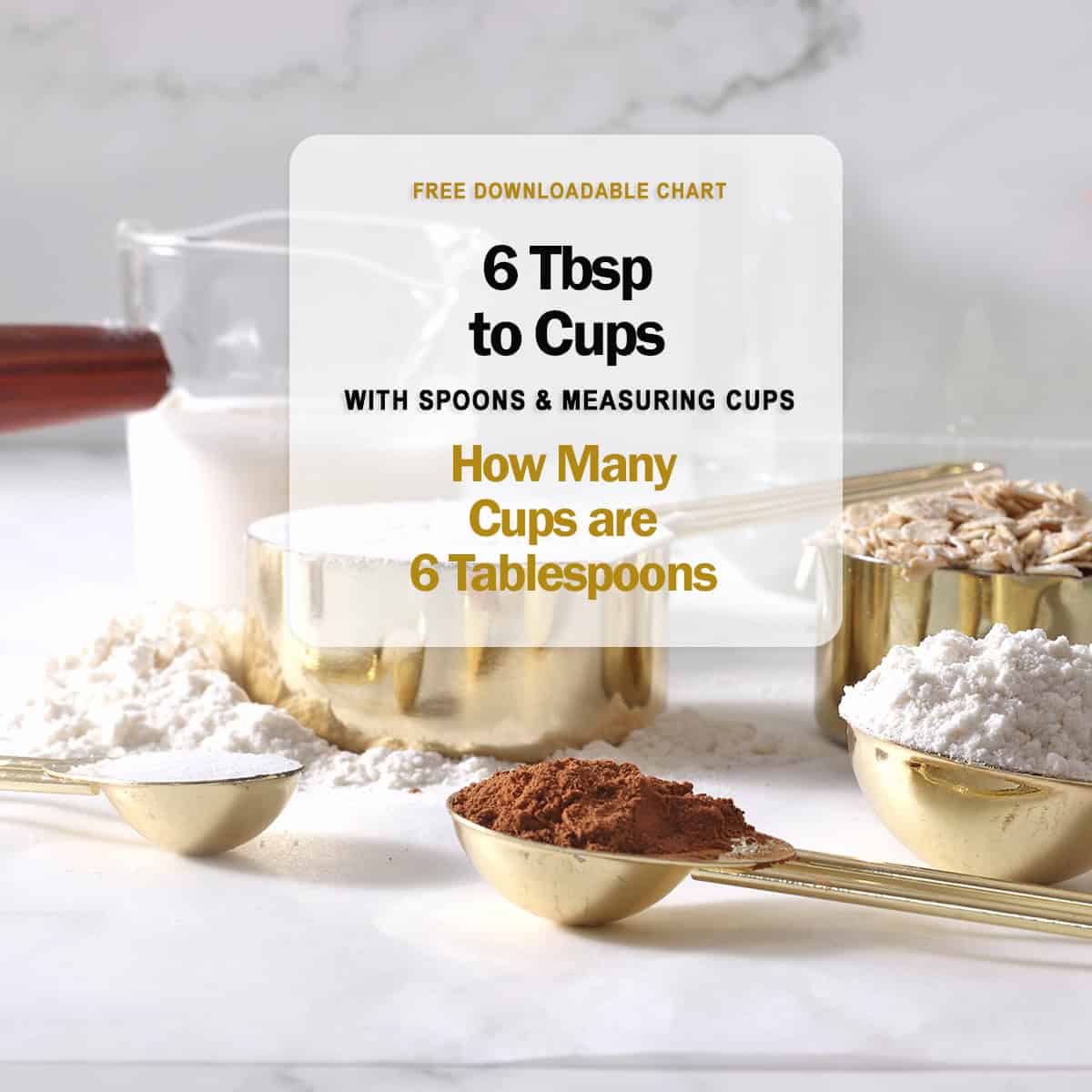
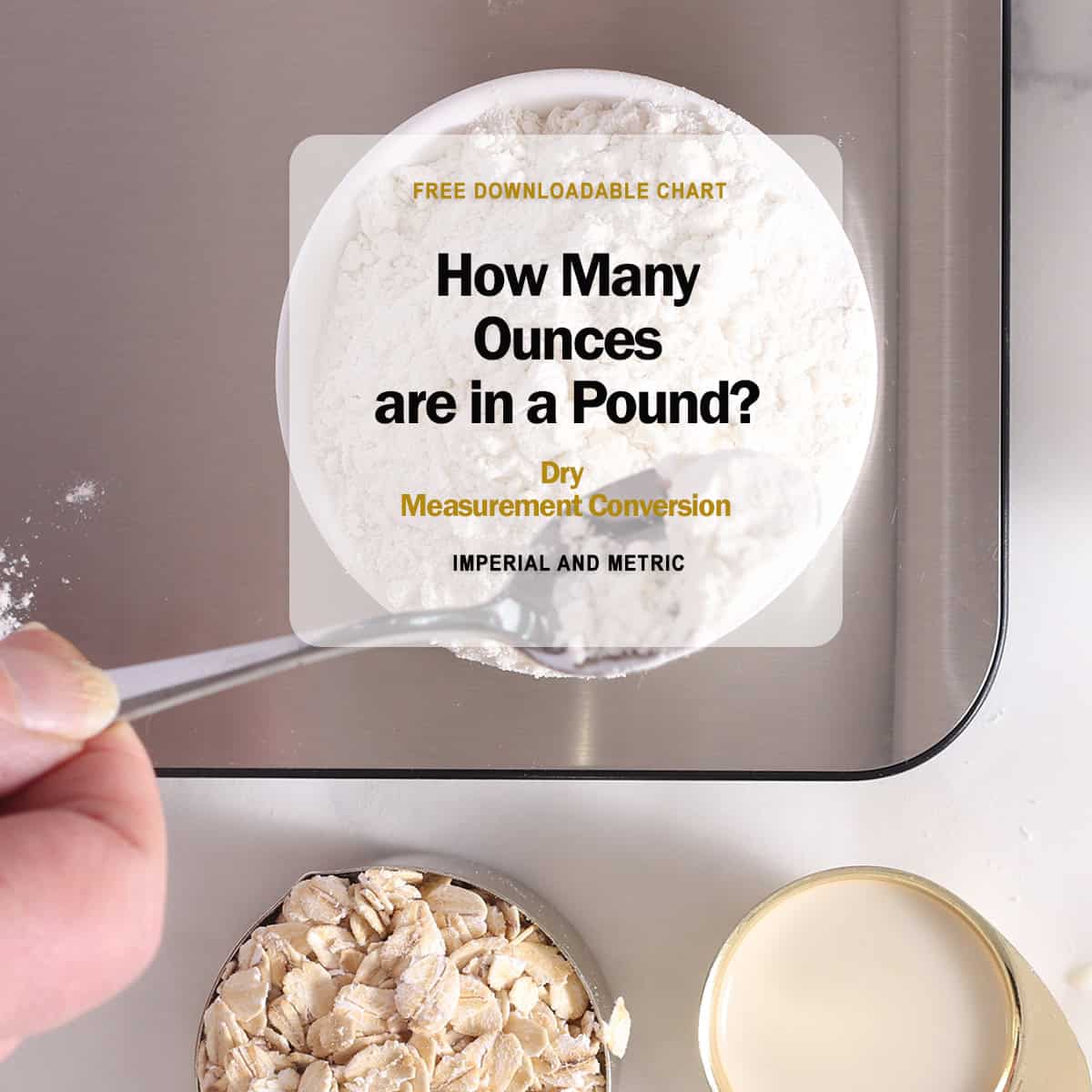
Leave a Reply